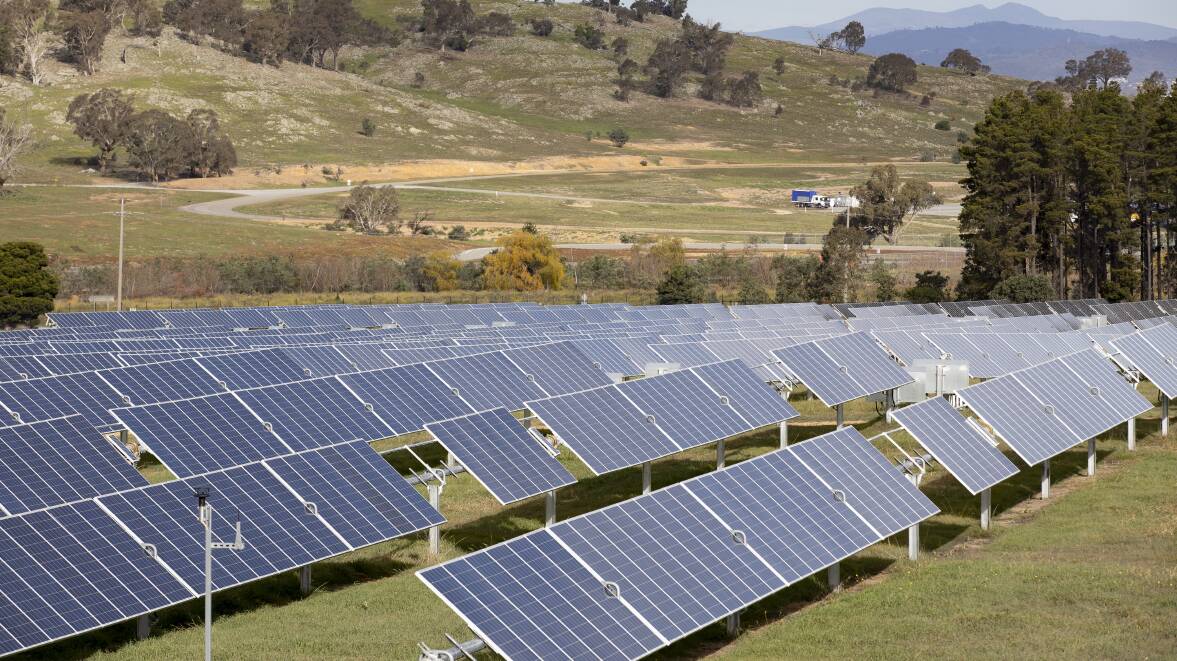Australia's east coast is in the midst of an energy crisis, with skyrocketing wholesale prices putting never before seen pressure on the national electricity grid.
Demand pressure reached Canberra this week, with consumers told to reduce energy use during peak periods.
With the market operator now taking control, it remains to be seen whether the impact of the gas and coal industry will continue to affect the ACT.
How does electricity supply work in the ACT?
The ACT government pays for enough electricity to be generated through large-scale renewable projects, primarily windfarms in South Australia, Victoria and NSW, to power the territory.
That energy is fed into the national electricity grid and on to substations at Holt and Williamsdale, through Transgrid operated transmission lines.
The distribution network service provider, Evoenergy, carries electricity from those two points to every home and business that uses electricity.
Customers purchase off electricity retailers who set their prices based on what they pay Evoenergy for the service of carrying electricity from the substations and how they've contracted their load.
Will ACT prices go up?
While the ACT is not subject to the same market volatility as the rest of the east coast, it is not completely immune from price hikes. Wind and solar don't have the same running costs as coal and gas, and operators don't switch off the wind and sun in response to market pressure.
The second thing providing stability in the ACT government's fixed-price contracts with wind and solar operators, who get paid market price for the electricity they generate.
Recently, ACT contract prices have fallen below the market price, meaning generators have paid the difference back to the ACT.
Also, Evoenergy, which controls about 40 per cent of electricity bills, has its prices set annually and won't be increasing prices.
However, retailers themselves still have to go into the market and buy their energy, so there is some susceptibility on the retail side around what they might have to pay and what they'll pass on to consumers.
Can we expect blackouts and shortages in the ACT?
On Wednesday a warning went out to ACT residents to reduce their energy use during the peak after work time. That request is ongoing in an effort to prevent blackouts in Canberra.
Whether that will continue is subject to getting more supply into the national network. Evoenergy has been meeting daily with the Australian energy market operation, for updates on where this is headed.
At this stage, Evoenergy is not receiving advice more than a day in advance, which means they're in the dark too.
The network is dependent on some of those out of operation plants coming back online and it is still unclear when that will happen.
What happens if the situation gets worse?
The first action from the market operator was asking governments to request customers use less energy, as they did on Wednesday night.
It can get to the stage where the operator asks Evoenergy to pull back some of its major customers.
Major electricity users in the ACT would then be asked to reduce their load.
The third step is going into rotational load shedding, which means whole parts of the network are dropped off.
The ACT hasn't gotten there yet and, at this stage, it is unclear whether it will.
More information will be available this afternoon.
Why is the ACT involved if we're 100 per cent renewable?
High coal and gas export prices, alongside around a quarter of ageing coal power stations being out of action, has led to a surge in wholesale prices in Australia.
In an attempt to control the industry, the electricity market operator put a cap on prices, which lead to some providers producing less for the market, thus putting a strain on supply.
While production of renewables isn't affected, where the ACT's electricity is coming from is.

Hugh Saddler, Associate Professor at the Australian National University, said the current situation could've been avoided nationally had Australia started building pumped-hydro storage sooner.
Professor Saddler said planning of the network's physical infrastructure had been in complete breakdown over the last nine years or so, with no agreement to incentivise storage investment.
He said the previous government's gas industry policy also created disincentive for them to run generators during peak periods, compounding the problem.
The Commonwealth government on Thursday reiterated that there would not be a windfall tax on gas exports, like what was introduced in the United Kingdom.
Professor Saddler said they could be forced to change their mind, should the situation worsen.
He said the first ACT government renewables contracts were signed as former prime minister Tony Abbott came into power in 2013, announcing the scrapping of the renewable energy target supporting wind and solar at the time.
"People in the renewable electricity generation industry will say the ACT government contracts saved the industry through that very, very bad time for them," he said.
"While the total target amount was reduced somewhat, the Renewable Energy Target scheme stayed in place and then investment all over Australia resumed."
We've made it a whole lot easier for you to have your say. Our new comment platform requires only one log-in to access articles and to join the discussion on The Canberra Times website. Find out how to register so you can enjoy civil, friendly and engaging discussions. See our moderation policy here.







